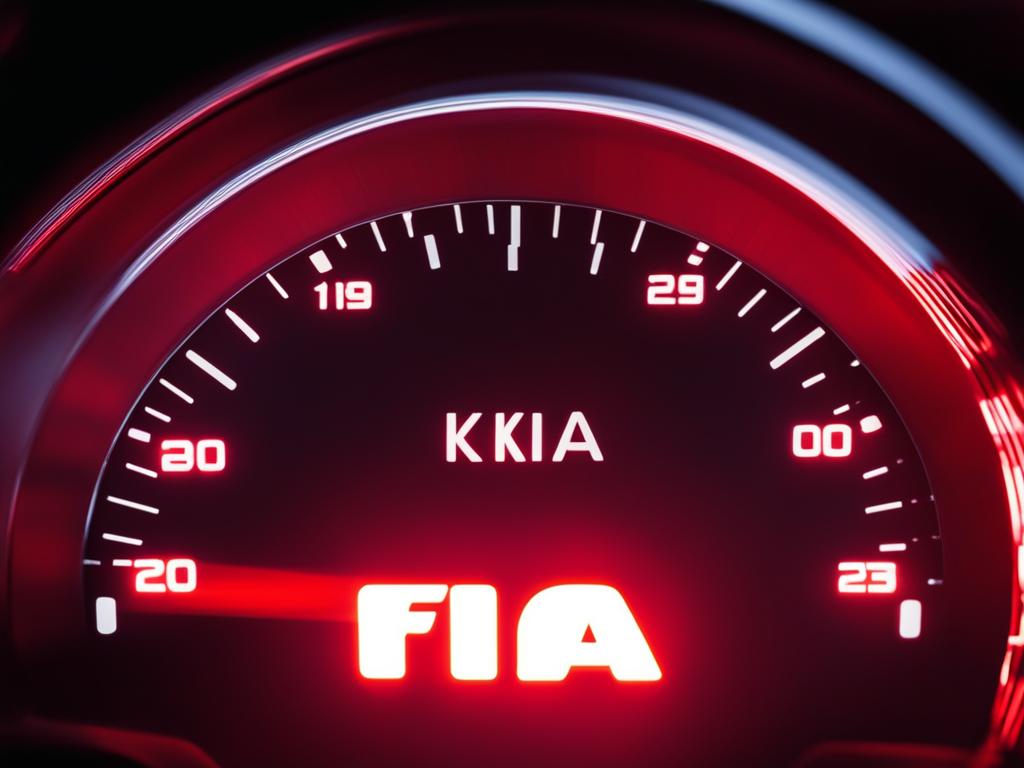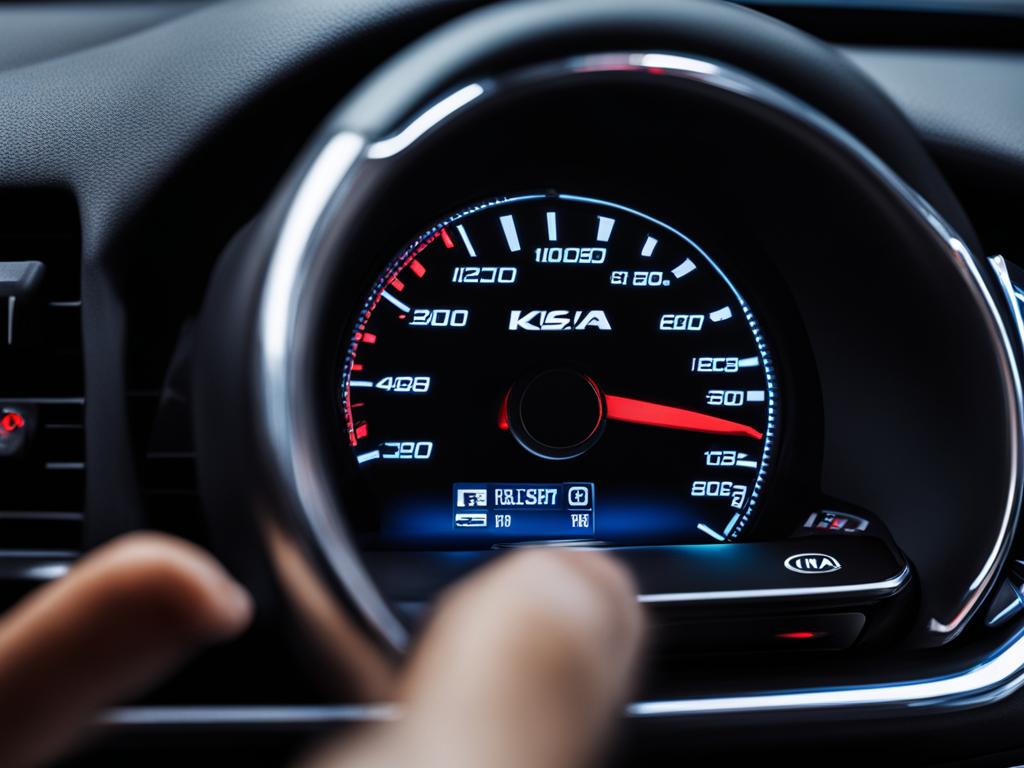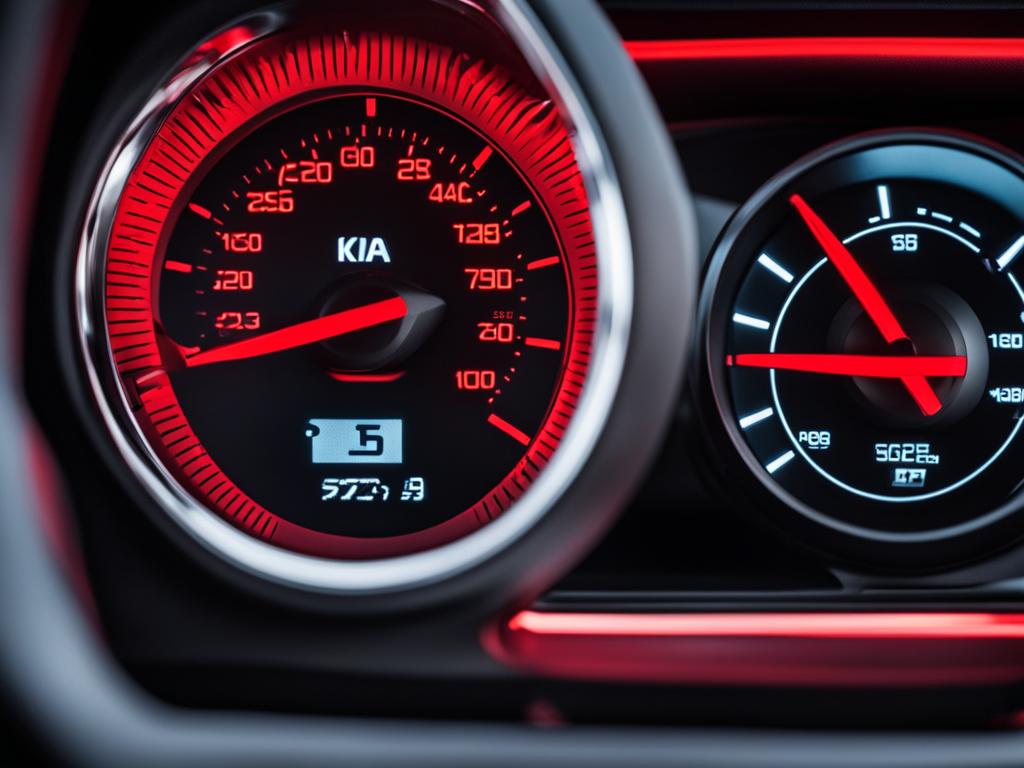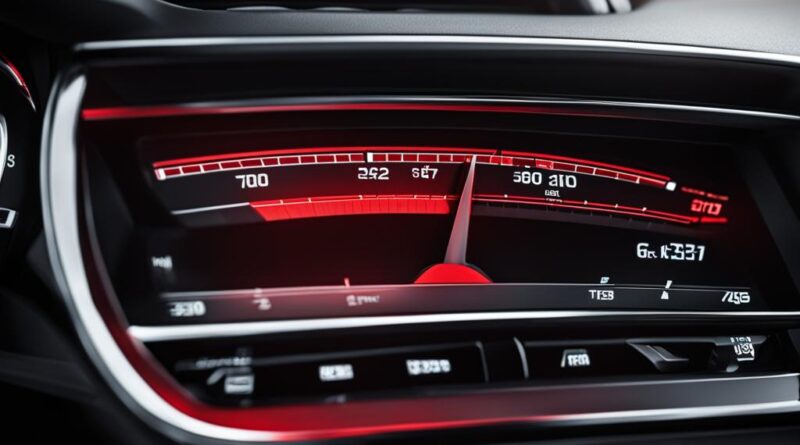Understanding Your Kia Check Engine Light: A Simple Guide
The Kia check engine light, also known as the malfunction indicator light (MIL), is a vital warning system that alerts the driver to potential issues with the vehicle’s emission system. When the check engine light illuminates, it means that the onboard computer has detected a problem and stored a diagnostic trouble code (DTC). It is important to understand the meaning of the check engine light and take prompt action to diagnose and fix the underlying issue.
In this guide, we will explore the common causes for the Kia check engine light to turn on, how to read the fault codes, and the importance of addressing the issue promptly. We will also discuss the precautions you can take to prevent check engine light issues and the difference between DIY and professional diagnosis. So, let’s dive in and gain a better understanding of your Kia check engine light!
- The Kia check engine light is a warning system that indicates potential issues with the vehicle’s emission system.
- When the check engine light is on, the onboard computer has stored a diagnostic trouble code (DTC).
- Common causes of the check engine light include worn spark plugs, loose gas caps, faulty mass air flow sensors, blown head gaskets, and clogged catalytic converters.
- You can read the check engine light codes using an OBD-II scanner.
- Addressing the check engine light promptly is crucial to prevent further damage and costly repairs.
What Does Kia Check Engine Light On Mean?
The Kia check engine light, also known as the malfunction indicator light (MIL), is a warning system that alerts the driver to potential issues with the vehicle’s emission system. When the light comes on, the onboard computer has detected a problem with the emission system and has stored a diagnostic trouble code (DTC). The causes for the check engine light to turn on can range from a loose gas cap to a serious engine issue. It is important to address the issue promptly to prevent further damage and ensure the efficient operation of the vehicle.
When the Kia check engine light illuminates, it is indicating that there is a problem with the vehicle’s emission system. This can be caused by a variety of issues, including a loose gas cap, faulty oxygen sensors, or more serious engine problems. It is important to pay attention to the check engine light and take appropriate action to diagnose and address the issue. Ignoring the check engine light can lead to more serious problems and potentially expensive repairs.
When the check engine light comes on, it is recommended to check the vehicle’s gas cap first. A loose or damaged gas cap can trigger the check engine light. If the gas cap is secure and the check engine light remains on, it is best to have the vehicle inspected by a qualified mechanic. They can use an OBD-II scanner to retrieve the stored diagnostic trouble code (DTC) and determine the exact cause of the check engine light.
Common Causes of Kia Check Engine Light
The table below provides a list of common causes for the Kia check engine light to turn on:
| Cause | Description |
|---|---|
| Loose Gas Cap | A loose or damaged gas cap can cause the check engine light to come on. Ensure the gas cap is tightly sealed. |
| Faulty Oxygen Sensor | The oxygen sensor measures the amount of oxygen in the exhaust and helps control the fuel-to-air ratio. A faulty sensor can trigger the check engine light. |
| Malfunctioning Catalytic Converter | The catalytic converter helps reduce harmful emissions. A malfunctioning converter can cause the check engine light to turn on. |
| Worn Spark Plugs | Worn spark plugs can lead to misfires and can trigger the check engine light. |
| Faulty Mass Air Flow Sensor | The mass air flow sensor measures the amount of air entering the engine. A faulty sensor can cause the check engine light to come on. |
These are just a few examples of common causes for the Kia check engine light to turn on. It is best to have the vehicle inspected by a qualified mechanic to diagnose and address the specific cause of the check engine light.
Common Causes of Kia Check Engine Light
When the check engine light illuminates in your Kia vehicle, it indicates that there is a problem with the vehicle’s emission system. Understanding the common causes of the check engine light can help you diagnose and address the issue promptly. Here are some of the most common causes:
| Cause | Description |
|---|---|
| Worn Spark Plugs | Old or worn-out spark plugs can lead to misfires, reduced engine performance, and trigger the check engine light. |
| Loose or Damaged Gas Caps | A loose or damaged gas cap can cause fuel vapor to escape, disrupting the fuel system and triggering the check engine light. |
| Faulty Oxygen Sensors | Oxygen sensors monitor the amount of oxygen in the exhaust gases. A faulty sensor can lead to improper air/fuel mixture and trigger the check engine light. |
| Malfunctioning Catalytic Converters | Catalytic converters help reduce harmful emissions. If they become damaged or fail, it can trigger the check engine light. |
| Faulty Ignition Coils | Ignition coils help generate the spark that ignites the fuel-air mixture in the engine. A faulty coil can disrupt the combustion process and trigger the check engine light. |
These are just a few examples of the common causes of the check engine light in Kia vehicles. It is important to note that each Kia model may have its own specific causes and diagnostic codes. To accurately diagnose the issue, it is recommended to bring the vehicle to a mechanic or dealership for professional diagnostic testing.
Regular maintenance and addressing any potential issues promptly can help prevent the check engine light from turning on. It is important to remember that simply resetting the check engine light without addressing the underlying cause is not a solution. If the light continues to come on after resetting, it is best to seek professional help to avoid further damage to your Kia vehicle.
How to Read Kia Check Engine Fault Codes
If your Kia check engine light comes on, it’s important to understand what the fault codes mean. By reading these codes, you can get valuable information about the specific issue causing the check engine light to illuminate. Here’s how you can read Kia check engine fault codes:
Using an OBD-II Scanner
An OBD-II scanner is a diagnostic tool that can be plugged into the vehicle’s diagnostic port to retrieve the codes stored in the computer system. These scanners are widely available for purchase, or you can have the codes read at a mechanic or dealership. Once you have the codes, you can refer to a diagnostic code chart to determine the exact issue.
Diagnostic Code Chart
A diagnostic code chart is a reference guide that provides a list of codes and their corresponding meanings. Each code corresponds to a specific issue with the vehicle. By looking up the code in the chart, you can gain insight into the problem and take appropriate action to fix it. These charts are available online or in automotive repair manuals.
| Diagnostic Code | Meaning |
|---|---|
| P0300 | Random/Multiple Cylinder Misfire Detected |
| P0171 | Fuel System Too Lean |
| P0420 | Catalyst System Efficiency Below Threshold |
| P0128 | Coolant Thermostat (Coolant Temperature Below Thermostat Regulating Temperature) |
It’s important to note that reading the codes is just the first step in diagnosing the issue. Once you have the code and its meaning, it’s recommended to consult a professional mechanic or dealership for further diagnosis and repair.

By understanding how to read Kia check engine fault codes, you can gain valuable insight into the issues affecting your vehicle. Whether you use an OBD-II scanner or consult a diagnostic code chart, the information provided by these codes can help you make informed decisions about maintenance and repairs. Remember to consult a professional for accurate diagnosis and repair to ensure the efficient operation of your Kia vehicle.
Common Symptoms of Kia Check Engine Light
When the Kia check engine light comes on, it is essential to pay attention to any accompanying symptoms. These symptoms can provide clues about the underlying issue and help guide the troubleshooting process. Here are some common symptoms that may occur when the Kia check engine light is illuminated:
- Poor acceleration: If you notice a decrease in your vehicle’s acceleration or a lack of power when you press the gas pedal, it can be a sign of an issue with the engine or fuel system.
- Reduced fuel efficiency: A decrease in fuel efficiency can indicate a problem with the engine’s performance, such as a misfire or a malfunctioning sensor.
- Rough idling: If your Kia is idling roughly, with noticeable vibrations or fluctuations in RPM, it may be a sign of an issue with the engine’s combustion process.
- Decrease in engine performance: A decrease in overall engine performance, such as difficulty starting the vehicle or a loss of power while driving, can be attributed to various engine-related issues.
It’s important to note that these symptoms can also be caused by other factors unrelated to the check engine light. However, if you experience any of these symptoms along with the illuminated check engine light, it is recommended to have your vehicle inspected by a qualified mechanic or dealership.
Kia Check Engine Light Resetting Procedures
Resetting the Kia check engine light is an important step in the diagnostic process. It can be done using an OBD-II scanner or by disconnecting the vehicle’s battery. However, it is important to note that simply resetting the check engine light does not fix the underlying issue that caused it to turn on. It is merely a temporary solution that clears the codes stored in the computer system.
If the check engine light continues to come on after resetting, it is recommended to bring the vehicle to a mechanic or dealership for further diagnosis and repair. They have the necessary tools and expertise to identify the exact cause of the check engine light and address it accordingly.
Resetting the check engine light without addressing the underlying issue may result in the light coming back on and potential damage to the vehicle. It is always best to seek professional assistance to ensure the proper functioning of your Kia vehicle.

Table: Pros and Cons of DIY and Professional Diagnosis
| DIY Diagnosis | Professional Diagnosis | |
|---|---|---|
| Pros | – Cost-effective – Convenient for minor issues – Increased knowledge and understanding of vehicle diagnostics |
– Expertise and experience – Advanced diagnostic tools – Accurate and comprehensive diagnosis |
| Cons | – Limited access to diagnostic tools – Risk of misinterpretation – Potential for causing further damage |
– Higher cost – Dependency on availability – Additional time for diagnosis |
DIY diagnosis can be suitable for minor issues and those with a good understanding of vehicle diagnostics. However, it is important to recognize the limitations and risks involved. Professional diagnosis offers the expertise, advanced tools, and accurate assessment necessary for complex problems. It ensures an efficient and reliable diagnosis, saving time and potential damage in the long run.
Importance of Promptly Addressing Kia Check Engine Light
When the Kia check engine light illuminates, it is crucial to address the issue promptly to prevent further damage to the vehicle and ensure its efficient operation. Ignoring the check engine light can lead to more serious and costly repairs down the line. The check engine light serves as a warning system that alerts the driver to potential issues with the vehicle’s emission system.
There are various reasons why the check engine light may turn on, ranging from minor issues like a loose gas cap to more serious engine problems. Regardless of the cause, it is essential to take immediate action to diagnose and fix the underlying issue. This will help prevent any potential complications and maintain the optimal performance of your Kia vehicle.
By promptly addressing the check engine light, you can avoid further damage and costly repairs. A professional mechanic or dealership can perform diagnostic testing to determine the specific cause of the check engine light. It is recommended to rely on their expertise and knowledge to accurately diagnose and resolve the issue. They have access to specialized tools and resources that can efficiently identify the problem and ensure proper repairs are made.
Regular maintenance and timely check engine light diagnosis can help prevent more significant issues in the future. By staying proactive and addressing any potential problems promptly, you can maintain the longevity and reliability of your Kia vehicle.
Table: Common Causes of Kia Check Engine Light
| Cause | Description |
|---|---|
| Worn Spark Plugs | Faulty spark plugs can lead to misfires and decrease engine performance. |
| Loose Gas Cap | A loose or damaged gas cap can cause fuel system leaks and trigger the check engine light. |
| Faulty Oxygen Sensors | Malfunctioning oxygen sensors can impact fuel efficiency and emissions control. |
| Malfunctioning Catalytic Converters | Defective catalytic converters can lead to increased emissions and reduced engine performance. |
| Faulty Ignition Coils | Defective ignition coils can cause engine misfires and decrease power output. |

Addressing the Kia check engine light promptly is essential for maintaining the health and reliability of your vehicle. To prevent further damage and ensure efficient operation, it is essential to seek professional help and perform necessary repairs or maintenance as soon as possible.
DIY vs. Professional Kia Check Engine Light Diagnosis
When it comes to diagnosing the cause of a Kia check engine light, you have the option of doing it yourself (DIY) or seeking professional help. Each approach has its pros and cons, and the best choice depends on your level of expertise and available resources.
If you have a good understanding of vehicle diagnostics and access to an OBD-II scanner, you may be able to diagnose the issue yourself. Using the scanner, you can retrieve the diagnostic trouble codes (DTCs) stored in the computer system and look them up in a code chart to determine the specific issue. This DIY approach can save you money, but it requires knowledge and the right tools.
On the other hand, if you are unsure or do not have the necessary tools, it is best to leave the diagnosis and repair to a professional mechanic. They have the expertise and experience to accurately diagnose the problem and recommend the appropriate repairs. While this option may be more expensive, it can save you time and ensure the issue is fixed correctly.
In the end, the choice between DIY and professional diagnosis depends on your comfort level and resources. If you are confident in your abilities and have the necessary tools, DIY diagnosis can be a cost-effective option. However, if you are uncertain or lack the tools, seeking professional help is the best way to ensure an accurate diagnosis and proper repair.

Table: Pros and Cons of DIY vs. Professional Diagnosis
| DIY Diagnosis | Professional Diagnosis |
|---|---|
| Pros: | Pros: |
|
|
| Cons: | Cons: |
|
|
“Whether you choose to diagnose the Kia check engine light yourself or seek professional help, the key is to address the issue promptly. Ignoring the check engine light can lead to further damage and costly repairs in the long run.”
Precautions to Prevent Kia Check Engine Light Issues
Regular vehicle maintenance and proactive measures can help prevent Kia check engine light issues. By following these precautions, you can reduce the risk of the check engine light turning on and ensure the efficient operation of your Kia vehicle.
1. Stay on Top of Regular Maintenance
Regular maintenance is essential for keeping your Kia in good condition and preventing potential issues. Make sure to follow the manufacturer’s recommended maintenance schedule, which typically includes tasks such as oil changes, air filter replacements, and spark plug replacements. By keeping up with regular maintenance, you can address any potential issues early on and minimize the chances of the check engine light coming on.
2. Check Your Gas Cap
A loose or damaged gas cap is one of the most common causes of a check engine light. Before you start the engine, ensure that the gas cap is tightly sealed. If the cap is loose or damaged, replace it to prevent fuel evaporation and potential emission system issues.
3. Be Aware of Driving Habits
Avoid aggressive driving habits, such as sudden acceleration or hard braking, as they can put unnecessary strain on your vehicle’s components and increase the chances of a check engine light turning on. Additionally, practice proper shifting techniques if you drive a manual transmission vehicle to prevent excessive wear on the clutch and transmission.
| Precautions | Benefits |
|---|---|
| Regular vehicle maintenance | Address potential issues early on |
| Check gas cap regularly | Prevent fuel evaporation and emission system issues |
| Avoid aggressive driving habits | Reduce strain on vehicle components |
By following these precautions, you can minimize the chances of experiencing check engine light issues with your Kia. However, it’s important to note that even with proper precautions, occasional problems may still arise. If the check engine light does come on, it’s recommended to have the vehicle diagnosed and repaired by a professional mechanic or at a Kia dealership to ensure accurate and effective solutions. Addressing check engine light issues promptly can help prevent further damage and costly repairs in the long run.

What to Do When Kia Check Engine Light Is Flashing
The Kia check engine light is a crucial indicator of a severe problem with the vehicle’s emission system. When the check engine light starts flashing, immediate action is necessary to prevent further damage and costly repairs. Here are the steps to take when faced with a flashing Kia check engine light:
- 1. Pull over safely: As soon as the check engine light starts flashing, it is important to find a safe location to pull over. Stopping the vehicle will help prevent any potential accidents or further damage.
- 2. Turn off the engine: After pulling over, turn off the engine immediately. This will help prevent any additional damage and decrease the risk of a fire or other serious issues.
- 3. Contact a mechanic or roadside assistance: When the check engine light is flashing, it is best to seek professional help. Contact a qualified mechanic or roadside assistance service to have the vehicle towed to a repair facility.
- 4. Do not continue driving: It is essential not to continue driving the vehicle with a flashing check engine light. Continuing to drive may cause further damage to the engine or other critical components, leading to more extensive repairs.
Remember, a flashing check engine light indicates a severe problem that requires immediate attention. Taking prompt action and seeking professional help will help ensure the safety of both you and your vehicle.

Kia Check Engine Light and Emissions Testing
When the Kia check engine light is on, it can have implications for the vehicle’s emissions testing. The check engine light serves as an indicator of a potential issue with the emission control system. If the light is illuminated during an emissions test, it likely means that there is a problem that needs to be addressed.
During emissions testing, the vehicle’s emission control system is evaluated to ensure that it meets the necessary standards for pollutants. If the check engine light is on, it is an indication that the vehicle may not be in compliance with these standards. This is because the check engine light typically alerts the driver to issues related to the emission control system.
In order to pass emissions testing, it is important to address the underlying issue that is causing the check engine light to turn on. This may involve diagnostic testing to identify the specific problem and then taking the necessary steps to repair it. Once the issue has been resolved, the check engine light can be reset, and the vehicle can be retested for emissions compliance.
| Implications of Kia Check Engine Light on Emissions Testing |
|---|
| If the check engine light is illuminated during emissions testing, it can result in a failed test. |
| Addressing the underlying issue causing the check engine light to turn on is essential for emissions compliance. |
| Diagnostic testing and repairs may be necessary to resolve the check engine light issue. |
| Once the problem is fixed, the check engine light can be reset and the vehicle can be retested for emissions compliance. |
It is important to remember that failing emissions testing can have legal implications depending on the jurisdiction. In some areas, vehicles that do not pass emissions testing may be subject to fines or other penalties. Additionally, a vehicle that does not comply with emissions standards may contribute to air pollution and environmental harm.
By promptly addressing the check engine light and taking the necessary steps to repair the underlying issue, you can ensure that your Kia vehicle meets emissions standards and operates efficiently.

Conclusion
The Kia check engine light serves as a crucial warning system that alerts drivers to potential issues with their vehicle’s emission system. Understanding the meaning behind the check engine light and taking prompt action to address any problems can help prevent further damage and costly repairs.
By utilizing diagnostic tools like OBD-II scanners and seeking professional assistance when necessary, Kia owners can ensure the efficient operation of their vehicles. Regular maintenance and precautions, such as changing spark plugs and air filters, tightening the gas cap, and visiting a mechanic or dealership for periodic diagnostic testing, can also help prevent check engine light issues.
Remember, the check engine light is not something to be ignored. It is a signal that something is amiss with your vehicle’s emission system. Taking immediate action can save you from additional complications and expenses down the line. Stay proactive in maintaining your Kia, and address any potential issues promptly to keep your engine running smoothly and efficiently.
FAQ
What does the Kia check engine light on mean?
The Kia check engine light, also known as the malfunction indicator light (MIL), indicates potential issues with the vehicle’s emission system.
What are the common causes of the Kia check engine light?
Common causes include worn spark plugs, loose gas caps, faulty mass air flow sensors, blown head gaskets, and clogged catalytic converters.
How do I read Kia check engine fault codes?
You can read Kia check engine fault codes using an OBD-II scanner, which retrieves codes stored in the vehicle’s computer system.
What are the common symptoms of the Kia check engine light?
Common symptoms include poor acceleration, reduced fuel efficiency, rough idling, and a decrease in engine performance.
How do I reset the Kia check engine light?
You can reset the Kia check engine light using an OBD-II scanner or by disconnecting the vehicle’s battery, but it is important to address the underlying issue.
Why is it important to promptly address the Kia check engine light?
Ignoring the check engine light can lead to more serious and costly repairs down the line, so it is important to address it promptly to prevent further damage.
Can I diagnose the Kia check engine light issue myself?
Yes, you can use an OBD-II scanner for DIY diagnosis, but it is recommended to have a good understanding of vehicle diagnostics or seek professional assistance.
What precautions can I take to prevent Kia check engine light issues?
Regular vehicle maintenance, such as changing spark plugs and air filters, ensuring a tightly sealed gas cap, and regular diagnostic testing, can help prevent check engine light issues.
What should I do if the Kia check engine light is flashing?
If the check engine light is flashing, it indicates a severe problem and should be addressed immediately by pulling over and contacting a mechanic or roadside assistance.
Can the Kia check engine light affect emissions testing?
Yes, a Kia check engine light on may cause the vehicle to fail emissions testing, indicating a potential issue with the emission control system.

